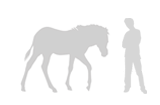Click on any of these African animals for cool facts and to find out if they’re at risk of extinction. All these African animals are available as beaded figurines and/or beaded key chains from our shop.
elephantlionhippopotamusblack rhinoceroswhite rhinocerosgiraffe |
zebramountain gorillaring tailed lemurmandrillchimpanzeewarthog |
Thanks to:
african elephant facts
The African elephant is the world’s largest land mammal.
Elephants use their trunk for smelling, breathing, trumpeting, detecting vibrations, caressing their young, sucking up water, and grasping objects. The tip of their trunk is comprised of two “fingers”, which allow for extreme dexterity. The trunk alone contains about 100,000 different muscles.
Both male and female elephants have tusks. They are used for digging for food and water, stripping bark from trees and fighting. At times, they also act as a resting place for the elephant’s very heavy trunk.
Because ivory is so valuable to some humans, many elephants have been killed for their tusks. This trade is illegal today, but it has not been completely eliminated, and some African elephant populations remain endangered.
An African elephant’s large ears (larger than the Asian elephant’s ears.), which look somewhat like the continent of Africa, also serve many purposes. The ears’ large surface area helps radiate excess heat under the harsh African sun. The ears are also often used to communicate visually. Flapping their ears can signify either aggression or joy. And finally, elephants’ ears, used in conjunction with the soles of their feet and their trunk, aid in the ability to hear sounds over long distances. On average, an elephant can hear another elephant’s call at 2-1/2 miles (4 km) away.
Elephants are fond of water and enjoy showering by sucking water into their trunks and spraying it all over themselves. Afterwards, they often spray their skin with a protective coating of dust. This helps then cool down and protects them from the strong African sun.
Elephants eat roots, grasses, fruit, and bark. An adult elephant can consume up to 300 pounds (136 kilograms) of food in a single day.
These hungry animals do not sleep much, and they roam over great distances while foraging for the large quantities of food that they require to sustain their massive bodies.
The social unit is a herd of mothers and their young, sisters, and female cousins, led by an older matriarch. Male elephants will leave the herd at around 14 years old when they hit puberty. They then join a loose knit band of other bull elephants, leaving the bachelor herd at will to search for potential mates.
Upon successful mating, the male elephant will move on to other herds, and the female will start a 22-month gestation period. When the calf is born, aunts, sisters, and cousins all help care for the newborn. In this way, all the elephants of the herd learn essential lessons in rearing a baby. And since elephants only give birth once every 2-5 years, successfully raising their offspring is critical to their survival.
At birth, elephants already weigh some 200 pounds (91 kilograms) and stand about 3 feet (1 meter) tall.
Aside from their ability to learn through watching and mimicking, African elephants also possess other very human qualities. Their great capacity for compassion is demonstrated as they care for the wounded and grieve the deceased. Their developed sense of memory allows them not only to remember lost loved ones, but also to harbor grudges, and recognize long-lost friends. Upon the return of a friend, elephants take part in a joyous greeting ceremony where they spin in circles, flap their ears, and trumpet.
Having adapted to life across Africa’s diverse ecosystems, the African elephant plays a vital role in maintaining ecological harmony. African elephants ingest plants and fruits, walk for miles, and excrete the seeds in fertile dung piles. In this way, new plants can grow in different areas and can cross fertilize. In fact, 90 different tree species rely on the elephant for propagation. African elephants also dig holes to expose underground springs. This allows smaller animals to access water in drier times.
African elephants, unlike their Asian relatives, are not easily domesticated. They range throughout sub-Saharan Africa and the rain forests of central and West Africa.
Type: Mammal
Diet: Herbivore
Average life span in the wild: Up to 70 years
Size: Height at the shoulder, 8.2 to 13 ft (2.5 to 4 m)
Weight: 5,000 to 14,000 lbs (2,268 to 6,350 kg)
Group name: Herd
Size relative to a 6-ft (2-m) man:

From the International Union for Conservation of Nature and Natural Resources:

african lion facts
Living in the grasslands, scrub, and open woodlands of sub-Saharan Africa, the lion is the second largest cat in the world. It is dwarfed slightly by the tiger, which is closely related and has a very similar body type.
Unlike other cats, lions are very social animals. They live in groups, called prides, of around 30 lions. A pride consists of up to three males, a dozen related females, and their young. The size of the pride is determined by the availability of food and water. If resources are scarce, the pride becomes smaller.
Pride members keep track of one another by roaring. Both males and females have a very powerful roar that can be heard up to 5 miles (8 km) away.
Males and females take on very different roles in the pride. Male lions spend their time guarding their territory and their cubs. They maintain the boundaries of their territory, which can be as large as 100 square miles (260 sq. km), by roaring, marking it with urine, and chasing off intruders. Their thick manes, a unique trait to male lions, protect their necks when they fight with challengers.
Female lions are the primary hunters of the group. They are smaller and more agile than males. But since their prey is still generally faster than them, they use teamwork to bring an animal down. Fanning out, they form a semicircle, with the smaller, weaker lionesses herding the prey towards the center. Then the stronger females knock the animal down and make the kill.
Lions usually hunt at night. Their prey includes antelopes, buffaloes, wildebeest, zebras, young elephants, rhinos, hippos, wild hogs, crocodiles and giraffes. But they also sometimes eat smaller prey like mice, birds, hares, lizards, and tortoises. They are not above stealing kills from other carnivores, like hyenas, wild dogs, cheetahs, and leopards, or scavenging spoiled meat.
After a successful hunt, all the lions in the pride share the meal. But there is a pecking order, with the adult males taking first claim, followed by the lionesses, and finally, the cubs.
Lions have a fast-working digestive system, which allows them to gorge themselves and then go for seconds shortly after. If available, they will drink water every day. But they can go 4-5 days without drinking by obtaining moisture from the stomach contents of their prey.
Spending 16-20 hours of the day sleeping or resting, lions are the laziest of the big cats. They can be found lying on their backs with their feet up or taking a snooze up in a tree. While lazing around, they are very affectionate towards one another, rubbing heads, grooming, and purring.
Lionesses give birth to 2-3 cubs at a time. Usually a couple females give birth around the same time. The cubs are then raised together, sometimes nursing communally.
Vulnerable to predators like hyenas, leopards, and jackals, cubs have a 60-70% mortality rate. They are sometimes trampled by large animals like buffaloes. Furthermore, when another group of male lions takes over a pride, they kill all the cubs so they can sire their own with the lionesses.
Female cubs stay with the group as they age. At around two years old, they become capable hunters. But young males are forced out of the pride at that age. They form bachelor groups and follow migrating herds until they are strong enough to challenge male lions of other prides. In general, a group of males stays in power in the pride for around three years before another bachelor group takes it over.
Lions once roamed most of Africa and into parts of Asia and Europe. Now around 20,000-30,000 of these big cats live in sub-Saharan Africa, mostly in protected reserves.
Lions are threatened by loss and fragmentation of habitat. They are also killed by humans in bravery rituals, as hunting trophies, for medicinal powers, or by ranchers protecting their livestock. Furthermore, they are susceptible to tick-borne diseases like canine distemper and babesia. Distemper is spread to lions by neighboring village dogs as well as hyenas. Babesia occurs during droughts, when malnourished prey is vulnerable to disease. The ticks spread to the lions after they kill the sick animal. The combination of distemper and babesia causes mass fatalities in lion populations.
Type: Mammal
Diet: Carnivore
Size: Head and body, 4.5 to 6.5 ft (1.4 to 2 m); Tail, 26.25 to 39.5 in (67 to 100 cm)
Weight: 265 to 420 lbs (120 to 191 kg)
Group name: Pride
Size relative to a 6-ft (2-m) man:


hippopotamus facts
Sub-Saharan Africa is the home to the second heaviest land mammal in the world — the hippopotamus. Their dense bodies make it impossible for them to swim, even though they spend most of their time in the water. In fact, this is why the Greeks named them the “river horse.”
The body of the hippopotamus is well suited for aquatic life. Their eyes, ears and nostrils are located at the top of their head, so they are able to see, hear, and breathe while mostly submerged. A clear membrane covers and protects their eyes while allowing them to see underwater. Their nostrils close to keep water out, and they can hold their breath for several minutes.
Staying underwater helps the hippopotamus not feel the weight of its hulking frame. They can weigh up to 8000 pounds (3600 kg)! Under the water, hippos tap their feet along the ground to propel themselves. Being submerged for the most part of the day also helps keep the hippo cool and protected from the sun. When they do venture out of the water for a significant amount of time, hippos secrete a red-colored substance to cool their hairless skin. The secretion is referred to as ‘blood-sweat’ but is actually neither of those fluids.
In the evening, hippopotamuses leave the water to feed. As herbivores, they feed on short grass for six hours a night consuming up to 68 kg (150 lb.). They may travel several kilometers to reach an adequate grazing area.
Though they feed on land, hippos do many other activities in the water, including mating and birthing. Groups of 10-30 hippos live together with one dominant male.
During the dry season, the dominant male chooses a partner, and then the other males fight each other for the remaining females.
Eight months after conception, at the height of the wet season, female hippos give birth to a single calf, either on land or underwater. Hippo calves weigh nearly 100 pounds (45 kilograms) at birth. Afterwards, mothers separate from the schools to bond with their calves underwater. The calf can suckle underwater by closing their ears and nostrils. They soon return to the schools, which provide some protection against crocodiles, lions, and hyenas.
While many people view the hippopotamus as a harmless and comic character, this is not actually the truth. In reality, the hippopotamus is a dangerous creature. They have powerful jaws and sharp teeth that can crush a crocodile or split a boat in two.
Hippos are listed as vulnerable due to loss of habitat. Hippopotamus habitats are infringed upon by humans, who use their grazing land for farming and also divert water for farming needs. War in the regions that hippos inhabit has also wreaked havoc on hippopotamus populations. Finally, poachers kill hippos for their ivory tusks and for sport.
Type: Mammal
Diet: Herbivore
Average life span in the wild: Up to 40 years
Size: Head and body, 9.5 to 14 ft (2.8 to 4.2 m); tail, 13.75 to 19.75 inches (35 to 50 cm)
Weight: 5,000 to 8,000 lbs (2,268 to 3,629 kg)
Group name: School
Size relative to a 6-ft (2-m) man:


black rhinoceros facts
Both black and white rhinoceroses are actually gray. They are different not in color but in lip shape. The black rhino has a pointed upper lip, while its white relative has a squared lip. The difference in lip shape is related to the animals’ diets. Black rhinos get most of their sustenance from eating trees and bushes. They use their lips to pluck leaves and fruit from the branches. White rhinos graze on grasses, walking with their enormous heads and squared lips lowered to the ground.
Except for females and their offspring, black rhinos are solitary. Females reproduce only every two and a half to five years. Their single calf does not live on its own until it is about three years old.
Black rhinos feed at night and during dawn and dusk. Under the hot African sun, they take cover by lying in the shade. They often find a suitable water hole and roll in its mud, coating their skin with a natural bug repellent and sun block.
Rhinos have sharp hearing and a keen sense of smell. They may find one another by following the trail of scent each enormous animal leaves behind it.
Black rhinos boast two horns, the foremost more prominent than the other. Rhino horns grow as much as three inches (eight centimeters) a year, and have been known to grow up to five feet (one and a half meters) long. Females use their horns to protect their young, while males use them to battle attackers.
The prominent horn for which rhinos are so well known has also been their downfall. Many animals have been killed their horns, which are revered for medicinal uses in China, Taiwan, Hong Kong, and Singapore. The horn is also valued in North Africa and the Middle East as an ornamental dagger handle.
The black rhino once roamed most of sub-Saharan Africa, but today is on the verge of extinction due to poaching fueled by commercial demand.
Type: Mammal
Diet: Herbivore
Size: Height at shoulder, 4.5 to 6 feet (1.4 to 1.8 m)
Weight: 1,760 to 3,080 lbs (800 to 1400 kg)
Size relative to a 6-ft (2-m) man:


white rhinoceros facts
Both black and white rhinoceroses are actually gray. They are different not in color but in lip shape. The black rhino has a pointed upper lip, while its white relative has a squared lip. The difference in lip shape is related to the animals’ diets. Black rhinos get most of their sustenance from eating trees and bushes. They use their lips to pluck leaves and fruit from the branches. White rhinos graze on grasses, walking with their enormous heads and squared lips lowered to the ground.
White rhinos live on Africa’s grassy plains, where they sometimes gather in groups of as many as a dozen individuals. Females reproduce only every two and a half to five years. Their single calf does not live on its own until it is about three years old.
Under the hot African sun, white rhinos take cover by lying in the shade. They find a suitable water hole and roll in its mud, coating their skin with a natural bug repellent and sunblock.
Rhinos have sharp hearing and a keen sense of smell. They may find one another by following the trail of scent each enormous animal leaves behind.
White rhinos have two horns, the foremost more prominent than the other. Rhino horns grow as much as three inches (eight centimeters) a year, and have been known to grow up to five feet (1.5 meters) long. Females use their horns to protect their young, while males use them to battle attackers.
The prominent horn for which rhinos are so well known has been their downfall. Many animals have been killed their horns, which are revered for medicinal use in China, Taiwan, Hong Kong, and Singapore. The horn is also valued in North Africa and the Middle East as an ornamental dagger handle. Many organizations are working to protect this much loved animal
Type: Mammal
Diet: Herbivore
Size: Head and body, 11 to 13.75 ft (3.4 to 4.2 m); tail, 20 to 27.5 in (50 to 70 cm)
Weight: 3,168 to 7,920 lbs (1,440 to 3,600 kg)
Size relative to a 6-ft (2-m) man:


giraffe facts
Giraffes are the world’s tallest mammals, thanks to their towering legs and long necks. A giraffe’s legs alone are taller than many humans—about 6 feet (1.8 meters). These long legs allow giraffes to run as fast as 35 miles (56 kilometers) an hour over short distances and cruise comfortably at 10 miles (16 kilometers) an hour over longer distances.
Typically, these fascinating animals roam the open grasslands in small groups of about half a dozen.
Bulls sometimes battle one another by butting their long necks and heads. Such contests aren’t usually dangerous and end when one animal submits and walks away.
Giraffes use their height to good advantage to get at leaves and buds in treetops that few other animals can reach (acacias are a favorite). Even the giraffe’s tongue is long! The 21-inch (53-centimeter) tongue helps them pluck tasty morsels from branches. Giraffes eat most of the time and, like cows, regurgitate food and chew it as cud. A giraffe eats hundreds of pounds of leaves each week and must travel miles to find enough food.
The giraffe’s height also helps it to keep a sharp lookout for predators across the wide expanse of the African savanna.
When giraffes walk, they move both legs on one side of their body and then both legs on the other side; this is unique to giraffes. However, they run in a similar style to other mammals, swinging their rear legs and front legs in unison.
The giraffe’s stature can be a disadvantage as well—it is difficult and dangerous for a giraffe to drink at a water hole. To do so they must spread their legs and bend down in an awkward position that makes them vulnerable to predators like Africa’s big cats. Giraffes only need to drink once every several days; they get most of their water from the luscious plants they eat.
Female giraffes give birth standing up. Their young endure a rather rude welcome into the world by falling more than 5 feet (1.5 meters) to the ground at birth. These infants can stand in half an hour and run with their mothers an incredible ten hours after birth.
Giraffes have beautiful spotted coats. While no two individuals have exactly the same pattern, giraffes from the same area appear similar.
Type: Mammal
Diet: Herbivore
Average life span in the wild: 25 years
Size: 14 to 19 ft (4 to 6 m)
Weight: 1,750 to 2,800 lbs (794 to 1,270 kg)
Size relative to a 6-ft (2-m) man:


zebra facts
No animal has a more distinctive coat than the zebra. Each animal’s stripes are as unique as fingerprints—no two are exactly alike—although each of the three species has its own general pattern.
Why do zebras have stripes at all? Scientists aren’t sure, but many theories center on their utility as some form of camouflage. The patterns may make it difficult for predators to identify a single animal from a running herd and distort distance at dawn and dusk. Or they may dissuade insects that recognize only large areas of single-colored fur or act as a kind of natural sunscreen. Because of their uniqueness, stripes may also help zebras recognize one another.
Zebras are social animals that spend time in herds. They graze together, primarily on grass, and even groom one another. They spend the majority of their day eating. Zebras are known to travel great distances to find food and water when the dry season arrives.
Plains (Burchell’s) zebras are the most common species. The other two species are Grevy’s and mountain. They live in small family groups consisting of a male (stallion), several females (mares), and their young. When a female becomes pregnant, it takes 13 months to have the baby, called a foal. These family groups are called harems. These harems may combine with others to form awe-inspiring herds thousands of head strong, but family members will remain close within the herd.
Zebras have very good hearing and eyesight, which helps them stay clear of predators such as lions, hyenas, and cheetahs. It also helps that they can run 35 mph (56 km/h) and pack a powerful kick. If one zebra spots a predator, it lets out a sharp two-syllable call. The young and female zebras run, while the males trail behind to defend them. If an animal is attacked, its family will come to its defense, circling the wounded zebra and attempting to drive off predators.
When not eating or traveling, zebras do take the opportunity to sleep. In fact, they sleep standing up! But zebras only sleep when they are in large groups so that they can be alerted of danger.
Type: Mammal
Diet: Herbivore
Average life span in the wild: 25 years
Size: Height at the shoulder, 3.5 to 5 ft (1.1 to 1.5 m)
Weight: 440 to 990 lbs (200 to 450 kg)
Group name: Herd
Size relative to a 6-ft (2-m) man:


mountain gorilla facts
There are roughly 700 mountain gorillas remaining on Earth. Their habitat is limited to protected national parks in two regions of Africa. One group of gorillas lives in the Bwindi Impenetrable National Park in Uganda. The other group is spread over three national parks on the green, volcanic slopes in the Virungas mountain region of the Democratic Republic of Congo, Uganda and Rwanda, areas that have seen much civil war from which the gorillas have not escaped unscathed. Many conservation initiatives, often curtailed due to civil war, are meant to aid mountain gorillas, and it is believed that their numbers may be steady or slowly increasing. Even though they have few natural predators they continue to face major threats from habitat loss and poaching. Their body parts are sold to collectors and baby gorillas are sold illegally as pets, research subjects or private zoo animals.
Mountain gorillas have longer hair and shorter arms than their lowland cousins. They also tend to be a bit larger than other gorillas.
Gorillas can climb trees, but are usually found on the ground in communities of up to 30 individuals. These troops are organized according to fascinating social structures. Troops are led by one dominant, older adult male, often called a silverback because of the swath of silver hair that adorns his otherwise dark fur. Troops also include several other young males, some females, and their offspring.
The leader organizes troop activities like eating, nesting in leaves, and moving about the group’s 0.75-to-16-square-mile (2-to-40-square-kilometer) home range.
Those who challenge this alpha male are apt to be cowed by impressive shows of physical power. He may stand upright, throw things, make aggressive charges, and pound his huge chest while barking out powerful hoots or unleashing a frightening roar. Despite these displays and the animals’ obvious physical power, gorillas are generally calm and nonaggressive unless they are disturbed. Mothers will fight to the death to protect their young.
In the thick forests of central and West Africa, troops find plentiful food for their vegetarian diet. They eat roots, shoots, fruit, wild celery, and tree bark and pulp.
Female gorillas give birth to one infant after a pregnancy of nearly nine months. Unlike their powerful parents, newborns are tiny—weighing four pounds (two kilograms)—and able only to cling to their mothers’ fur. These infants ride on their mothers’ backs from the age of four months through the first two or three years of their lives.
Young gorillas, from three to six years old, remind human observers of children. Much of their day is spent in play, climbing trees, chasing one another, and swinging from branches.
In captivity, gorillas have displayed significant intelligence and have even learned simple human sign language.
Type: Mammal
Diet: Omnivore
Average life span in the wild: 35 years
Size: Standing height, 4 to 6 ft (1.2 to 1.8 m)
Weight: 300 to 485 lbs (135 to 220 kg)
Group name: Troop or band
Size relative to a 6-ft (2-m) man:


ring tailed lemur facts
Lemurs are primates found only on the African island of Madagascar and some tiny neighboring islands. Because of its geographic isolation, Madagascar is home to many amazing animals found nowhere else on Earth.
Ring-tailed lemurs are unmistakable because of their long, vividly striped, black-and-white tail. They are familiar residents of many zoos.
Lemurs use their hands and feet to move nimbly through the trees, but cannot grip with their tails as some of their primate cousins do. Ring-tailed lemurs also spend a lot of time on the ground, which is unusual among lemur species. They forage for fruit, which makes up the greater part of their diet, but also eat leaves, flowers, tree bark, and sap. When the lemurs travel over ground, they keep their tails in the air to ensure everyone in the group is in sight and stays together.
Ring-tailed lemurs have powerful scent glands on their wrists and use their unique odor as a communication tool and even as a kind of weapon. Lemurs mark their territory by scent, serving notice of their presence to all who can smell. During mating season, male lemurs battle for dominance by trying to out-stink each other. They cover their long tails with smelly secretions and wave them in the air while staring menacingly to determine which animal is more powerful. Eventually one male will back down and run away.
Vocally, ring-tailed lemurs have several different alarms calls that alert members to danger. They have several predators, including fossas (mammals related to the mongoose), Madagascar Harrier-hawks, Madagascar buzzards, Madagascar ground boas, civets, and domestic cats and dogs.
Ring-tailed lemurs live in groups known as troops. These groups may include 6 to 30 animals, but average about 17. Both sexes live in troops, but a dominant female presides over all.
Females reproduce starting at 3 years of age, generally giving birth to one baby a year. When born, a ring-tailed lemur baby weighs less than 100 g (3 oz.). The newborn is carried on its mother’s chest for 1-2 weeks and then is carried on her back. At 2 weeks, the baby starts eating solid food and begins venturing out on its own. But the juvenile is not fully weaned until 5 months of age.
Ring-tailed lemurs are endangered, largely because the sparse, dry forests they love are quickly vanishing due to being converted to farmland or burned for the production of charcoal. However, the ring-tailed lemur is popular in zoos, and they do comparatively well in captivity and reproduce regularly. In captivity, ring-tailed lemurs can live for nearly 30 years, compared to up to 20 in the wild.
Type: Mammal
Diet: Herbivore
Average life span in the wild: Up to 18 years
Size: Head and body, 17.75 in (45 cm); tail, 21.75 in (55 cm)
Weight: 5 to 7.5 lbs (2.3 to 3.4 kg)
Group name: Troop
Size relative to a 6-ft (2-m) man:


mandrill facts
Mandrills are the largest of all monkeys. They are shy and reclusive primates that live only in the rain forests of equatorial Africa.
Mandrills are extremely colorful, perhaps more so than any other mammal. They are easily identifiable by the blue and red skin on their faces and their brightly hued rumps. These distinctive colors become brighter when the animal is excited. They also have extremely long canine teeth that can be used for self-defense—though baring them is typically a friendly gesture among mandrills.
These are primarily terrestrial monkeys, and they move with long arms to forage on the ground for fruits, roots, and animals such as insects, reptiles, and amphibians. Their cheeks have built-in pouches that are used to store snacks for later consumption. Though mandrills spend much of their time on the ground, they can climb trees and do so to sleep.
Mandrills live in troops, which are headed by a dominant male and include a dozen or more females and young. They also gather in multi-male/multi-female groups that can include some 200 individuals.
These colorful primates are threatened. They are often hunted as bush meat, and many Africans consider them to be a delicacy. Mandrills are feeling the squeeze of spreading agriculture and human settlement—both are shrinking their rain forest homeland.
Type: Mammal
Diet: Omnivore
Average life span in the wild: 20 years
Size: 3 ft (90 cm)
Weight: 77 lbs (35 kg)
Group name: Troop
Size relative to a 6-ft (2-m) man:


chimpanzee facts
Chimpanzees live in social communities of several dozen animals, and can habituate themselves to African rain forests, woodlands, and grasslands.
Although chimpanzees normally walk on all fours, they can stand and walk upright. By swinging from branch to branch they can also move quite efficiently in the trees, where they do most of their eating. Chimpanzees usually sleep in the trees as well, employing nests of leaves.
Chimps are generally fruit and plant eaters, but they also consume insects, eggs, and meat, including carrion. They have a tremendously varied diet that includes hundreds of known foods.
Chimpanzees are one of the few animal species that employ tools. They shape and use sticks to retrieve insects from their nests or dig grubs out of logs. They also use stones to smash open tasty nuts and employ leaves as sponges to soak up drinking water. Chimpanzees can even be taught to use some basic human sign language.
Females can give birth at any time of year, typically to a single infant that clings to its mother’s fur and later rides on her back until the age of two. Females reach reproductive age at 13, while males are not considered adults until they are 16 years old.
Although chimps and humans are closely related, the apes have suffered much at human hands. These great apes are endangered and still threatened by bush meat hunters and habitat destruction.
Type: Mammal
Diet: Omnivore
Average life span in the wild: 45 years
Size: 4 to 5.5 ft (1.2 to 1.7 m)
Weight: 70 to 130 lbs (32 to 60 kg)
Group name: Community
Size relative to a 6-ft (2-m) man:


warthog facts
Warthogs are members of the same family as domestic pigs, but present a much different appearance. These sturdy hogs are not among the world’s most aesthetically pleasing animals—their large, flat heads are covered with “warts,” which are actually protective bumps. Warthogs also sport four sharp tusks. They are mostly bald, but they do have some sparse hair and a thicker mane on their backs.
Though warthogs appear ferocious, they are basically grazers. They eat grasses and plants, and also use their snouts to dig for roots or bulbs. When startled or threatened, warthogs can be surprisingly fast, running at speeds of up to 30 miles (48 kilometers) an hour.
Warthogs are adaptable and are able to go long periods without water, as much as several months in the dry season.
When water is available, warthogs will seek it and often submerge to cool down. They will also wallow in mud for the same purpose—and to gain relief from insects. Birds also aid these hogs in their battle with insects sometimes riding along on their warthog hosts, feeding on the tiny creatures invading their hides.
These African hogs often utilize empty dens created by aardvarks. They typically back in, using their tusks to effectively guard the entrance.
Warthogs also use these dens to have their young. Females have litters of four or fewer young, which they suckle for about four months.
Type: Mammal
Diet: Herbivore
Average life span in the wild: 15 years
Size: Height at shoulder, 30 in (76 cm)
Weight: 120 to 250 lbs (54.5 to 113 kg)
Group name: Sounder
Size relative to a 6-ft (2-m) man:




